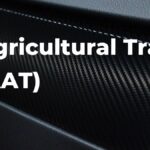Culture travel is the act of visiting different cultures in order to learn about their customs and traditions. Agriculture cryptocurrencie coin is a digital currency that focuses on helping farmers in developing countries get access to affordable financial tools and services.
The Founders of Culture Travel Agriculture (CTA) token
The founders of Culture Travel Agriculture (CTA) coin are Jörg Müller, Christiane Schulz, and Dieter Kühn.
Bio of the founder
I am a graduate of the University of California, Davis with a degree in Agricultural Economics. I have been working in the agricultural industry for over 10 years, most recently as a crop consultant. I have also been involved in travel for over 10 years, and have been exploring different parts of the world for food and culture. I saw an opportunity to combine my two passions and create a coin that celebrates agriculture and travel. CTA coins are designed to be collector’s items, and are made from high-quality metals with beautiful finishes.
Why are Culture Travel Agriculture (CTA) Valuable?
Culture Travel Agriculture (CTA) is valuable because it helps to preserve and promote traditional agricultural practices and food cultures. It also helps to connect people from different parts of the world, which can help to improve understanding and cooperation between them.
Best Alternatives to Culture Travel Agriculture (CTA)
1. Farm to Table: A CTA coin that rewards people for eating local food.
2. Local Food Challenge: A CTA coin that challenges people to eat local food for a week.
3. Eat Local Week: A CTA coin that challenges people to eat local food for a week.
4. Farm-to-Table Challenge: A CTA coin that challenges people to eat local food for a month.
5. Local Food Month: A CTA coin that challenges people to eat local food for a month.
Investors
CTA investors are interested in agriculture because it is a sector with high potential for growth. Agriculture is a key sector of the global economy, and CTA investors believe that there is significant potential for growth in this sector.
Why invest in Culture Travel Agriculture (CTA)
There are a few reasons to invest in CTA. First, CTA is an important sector of the tourism industry. It supports jobs and contributes to the economy by generating revenue from tourism-related activities. Second, CTA is a sustainable sector that can help preserve cultural heritage and promote environmental conservation. Finally, CTA offers opportunities for travelers to learn about different cultures and experience unique locales.
Culture Travel Agriculture (CTA) Partnerships and relationship
Culture Travel Agriculture (CTA) partnerships are beneficial for both parties involved. CTA organizations benefit from increased exposure and opportunities to connect with new audiences, while agricultural producers receive valuable support and access to new markets.
CTA partnerships can help agricultural producers expand their reach into new markets and increase their income. In addition, CTA organizations can learn about new production methods and technologies that could be beneficial for their own operations.
Overall, CTA partnerships are a beneficial way for both parties to gain exposure and increase their respective incomes.
Good features of Culture Travel Agriculture (CTA)
1. CTA helps farmers to get a better price for their produce, as well as to increase their exports.
2. CTA helps farmers to improve their production techniques and to learn new ones.
3. CTA helps farmers to connect with other farmers and with experts in the field, so that they can learn from each other and improve their skills.
How to
There is no one-size-fits-all answer to this question, as the best way to culture travel agriculture depends on the specific needs of your farm. However, some tips on how to culture travel agriculture include:
1. Plan your trip carefully. Make sure you have a clear idea of what you want to accomplish while culture traveling and plan your route accordingly. This will help you avoid potential roadblocks and ensure that you get the most out of your trip.
2. Get organized. Before you leave, make sure you have all the necessary paperwork (e.g., permits, insurance) in order and know how to operate your equipment properly. This will save time and hassle while on your trip and help ensure a successful harvest.
3. Be prepared for weather conditions. Culture traveling can be challenging in both hot and cold climates, so be prepared for both extremes. Bring appropriate clothing and gear for the weather conditions, as well as enough food and water to last throughout your trip.
How to begin withCulture Travel Agriculture (CTA)
There is no one-size-fits-all answer to this question, as the best way to begin with CTA will vary depending on your experience and interests. However, some tips on how to get started with CTA include researching different cultures and their agricultural practices, visiting agricultural fairs and festivals, and speaking with local farmers.
Supply & Distribution
Culture travel agriculture is the practice of traveling to different parts of the world to learn about and experience different agricultural practices. This type of tourism can provide tourists with a unique perspective on food production and can help to improve the quality of food products in various parts of the world.
Proof type of Culture Travel Agriculture (CTA)
The Proof type of Culture Travel Agriculture is an evidence-based approach to understanding and managing cultural landscapes.
Algorithm
The Algorithm of Culture Travel Agriculture (CTA) is a model that helps to understand how different aspects of culture, such as foodways, can be transmitted through travel. The model was developed by cultural anthropologist Katherine A. Skelton in the 1990s and has been used to study the diffusion of foodways and other cultural practices through travel.
The CTA model is based on the premise that culture is a complex system that can be understood in terms of its constituent parts. These parts include social institutions, beliefs, values, and behaviors. Culture can be transmitted through travel by passing on these elements of culture to new members of society.
The CTA model is divided into four stages: acquisition, transmission, transformation, and retention. In the acquisition stage, new members of society learn about the culture from those who are already familiar with it. This learning takes place through exposure to the culture’s social institutions, values, and behaviors. Transmission occurs when this information is passed on from one person to another via social networks or other forms of communication. Transformation occurs when the new knowledge alters or changes the way that the culture is practiced. Finally, retention occurs when this new knowledge remains in circulation and is used by new members of society.
The CTA model has been used to study a variety of cultural practices, including foodways. Foodways are specific types of cultural practices that involve the consumption or preparation of food. They can include traditional foods such as cuisine from a particular region or country, as well as modern foods that have been adapted from traditional recipes or methods. Foodways can be transmitted through travel by passing on information about how to prepare these foods properly or how to find specific ingredients nearby.
The CTA model has also been used to study the diffusion of music styles through travel. Music styles are based on specific types of sounds (such as melodies or rhythms) and can be transmitted through travel by passing on information about these styles to new members of society. This information can take many forms, including recordings made during travels or descriptions written by those who have experienced a particular music style firsthand
Main wallets
There are a few main culture travel agriculture wallets. One example is the Passport Wallet, which is made of durable materials and has a variety of pockets and compartments to store your passport, boarding pass, and other travel documents. Another example is the My Passport Holder, which is made of high-quality materials and has a built-in RFID blocking sleeve to keep your passport safe while traveling.
Which are the main Culture Travel Agriculture (CTA) exchanges
The main Culture Travel Agriculture (CTA) exchanges are the International Agricultural Trade Show (IATS), the World Food Expo (WFO), and the National Agricultural Exhibition and Conference (NAEC).





